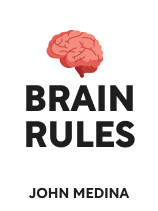

This article is an excerpt from the Shortform book guide to "Brain Rules" by John Medina. Shortform has the world's best summaries and analyses of books you should be reading.
Like this article? Sign up for a free trial here .
Do you struggle to meet the needs of all your students? How can individualized instruction provide a better learning experience for students?
In Brain Rules, Dr. John Medina recommends individualized instruction methods to accommodate each student’s unique way of learning. Two of these methods include smaller class sizes and flipped classrooms, which suit individual students.
Learn more on the benefits of individualized instruction, and why it may be necessary for teaching.
Breaking Down Unique Neural Pathways
Before understanding how individualized instruction is beneficial for students, you have to understand why everyone’s brain is unique. Everyone’s brain has its own unique set of neural connections. This is because of a process that develops neural connections, which occurs differently in every person.
When we’re exposed to new things, our brains adapt and incorporate the information into our neural networks. Because everyone’s experiences are unique, our brains develop ways of reacting to and understanding their experience that is individualized. Instruction is an essential part of the developmental stages of life and must adapt to the standards of the individual.
To illustrate how everyone’s brains are unique, Medina discusses studies that show how people store information in different parts of their brains. For example, two people may store their language ability in different regions from one another. This uniqueness shows the flexibility of our brains and accounts for our ability to adapt to new circumstances and environments.
(Shortform note: This illustrates that, even if a cognitive function is usually processed by one part of the brain, individuals may store it differently. Most people store language on the left side of their brain. However, some people also store language on both sides of the brain, or only on the right side.)
Redesigning Schools For Individualized Instruction
Medina argues that we can redesign institutions like schools to suit everyone’s unique brain wiring. Since most schools and workplaces are standardized in structure, they don’t fit all individuals. For example, while most students are expected to read by the 1st grade, not all children have the ability to do so yet.
Medina recommends a couple of methods of individualized instruction to address this issue. To help suit school to individual students, Medina recommends smaller class sizes. This would help teachers learn students’ different learning styles. Another technique for individualized instruction is to use a “flipped classroom” where students review lectures at home before doing supervised homework at school.
Are Small Class Sizes and Flipped Classrooms Effective?
Medina recommends small class sizes as a way to encourage individualized learning, but findings on their effectiveness are mixed. A set of studies showed that while small class sizes improved reading skills, they did not improve math skills. This mixed effectiveness might be because schools have to hire a large number of teachers to create small classes, which might lead them to lower their hiring standards so that some of those teachers may not be well-qualified. Studies show that while small class sizes can encourage individualized instruction, it’s more important for students to have great teachers.
On the other hand, studies show that flipped classrooms can be very effective. Students in flipped classrooms often see improvements in their memory of important concepts, critical thinking, and engagement with course materials.

———End of Preview———
Like what you just read? Read the rest of the world's best book summary and analysis of John Medina's "Brain Rules" at Shortform .
Here's what you'll find in our full Brain Rules summary :
- An explanation of how the brain works in a simple and accessible way
- The 12 rules that help fulfill the core functions of the brain
- How to improve your thinking and learning abilities






